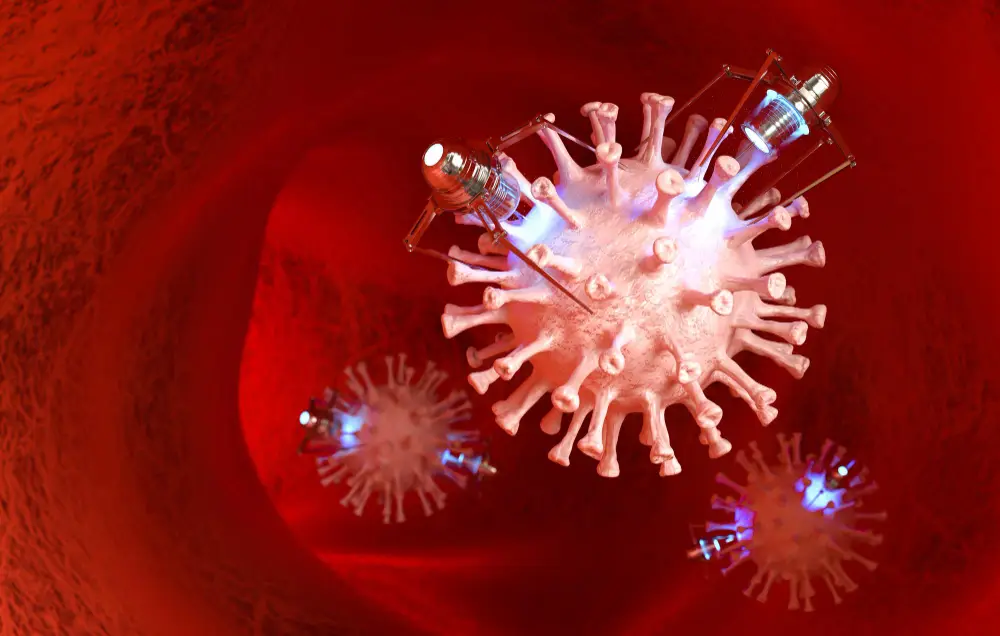
Nanotechnology and Drug Delivery: Revolutionizing Photodynamic Therapy
Photodynamic therapy (PDT) has emerged as a promising method for treating various medical conditions, particularly cancer. This therapy utilizes photosensitizing agents, light, and oxygen to elicit cell death, primarily in cancerous cells. However, one of the critical challenges in PDT is the targeted and efficient delivery of photosensitizers to the tumor cells. This is where nanotechnology, specifically drug delivery systems, plays a transformative role [1].
Nanotechnology in PDT: Nanotechnology involves manipulating matter at an atomic or molecular scale to create novel materials and devices with enhanced properties. In the context of PDT, nanotechnology-based drug delivery systems can improve the solubility, stability, and bioavailability of photosensitizers [2]. These systems can also facilitate the targeted delivery of these agents, ensuring they accumulate in the tumor tissue more effectively than in healthy tissues, thereby minimizing side effects.
Types of Nanocarriers:
Liposomes: These are spherical vesicles with a phospholipid bilayer, capable of encapsulating hydrophilic and lipophilic drugs. Liposomes can be designed to target tumor cells specifically by modifying their surface with ligands that bind to receptors overexpressed on cancer cells [3].
Dendrimers: These are highly branched, tree-like structures. Their size and the number of branches can be precisely controlled, making them ideal for drug delivery. Dendrimers can be functionalized with photosensitizers and targeting moieties for effective PDT [4].
Metallic Nanoparticles: Gold and silver nanoparticles are particularly promising due to their unique optical properties. They can enhance the efficacy of PDT by generating localized heat when irradiated with light at specific wavelengths [5].
Targeted Delivery and Reduced Side Effects: The major advantage of using nanocarriers in PDT is the enhanced targeting capability. By exploiting the enhanced permeability and retention (EPR) effect commonly seen in tumors, these nanoparticles preferentially accumulate in tumor tissue. Additionally, surface modifications with targeting ligands or antibodies can further increase the specificity of the drug delivery, ensuring that the photosensitizers are predominantly delivered to the cancer cells [6].
This targeted approach not only improves the efficacy of the treatment but also significantly reduces the side effects. Traditional chemotherapy often affects both cancerous and healthy cells, leading to numerous side effects. Nanocarrier-mediated drug delivery in PDT helps to circumvent this issue.
Challenges and Future Directions: While the use of nanotechnology in PDT offers many advantages, there are challenges that need addressing. These include the potential toxicity of nanomaterials, the stability of the drug-nanocarrier complex, and the regulatory hurdles for clinical use.
Future research is focusing on developing biocompatible and biodegradable nanocarriers that can efficiently deliver drugs while being safe for the patient. There is also ongoing work to create smart nanocarriers that can release their payload in response to specific stimuli, such as pH changes or enzyme activity, which are characteristic of tumor environments.
Conclusion: The integration of nanotechnology into photodynamic therapy, particularly through advanced drug delivery systems, is paving the way for more effective and safer cancer treatments. While challenges remain, the potential for improved patient outcomes is significant, making this an exciting and rapidly evolving field of research. As technology advances, it is likely that nanotechnology-enhanced PDT will become a cornerstone in the fight against cancer and other diseases.
References:
- Calixto, G. M. F., Bernegossi, J., De Freitas, L. M., Fontana, C. R., & Chorilli, M. (2016). Nanotechnology-based drug delivery systems for photodynamic therapy of cancer: a review. Molecules, 21(3), 342.
- Abrahamse, H., Kruger, C. A., Kadanyo, S., & Mishra, A. (2017). Nanoparticles for advanced photodynamic therapy of cancer. Photomedicine and laser surgery, 35(11), 581-588.
- Rommasi, F., & Esfandiari, N. (2021). Liposomal nanomedicine: applications for drug delivery in cancer therapy. Nanoscale Research Letters, 16(1), 95.
- Sherje, A. P., Jadhav, M., Dravyakar, B. R., & Kadam, D. (2018). Dendrimers: A versatile nanocarrier for drug delivery and targeting. International journal of pharmaceutics, 548(1), 707-720.
- Sun, J., Kormakov, S., Liu, Y., Huang, Y., Wu, D., & Yang, Z. (2018). Recent progress in metal-based nanoparticles mediated photodynamic therapy. Molecules, 23(7), 1704.
- Zhang, Y., Wang, B., Zhao, R., Zhang, Q., & Kong, X. (2020). Multifunctional nanoparticles as photosensitizer delivery carriers for enhanced photodynamic cancer therapy. Materials Science and Engineering: C, 115, 111099.




